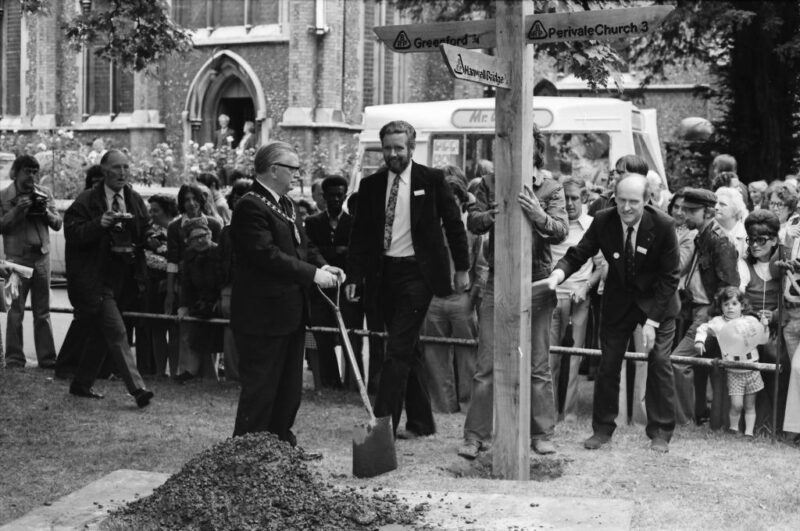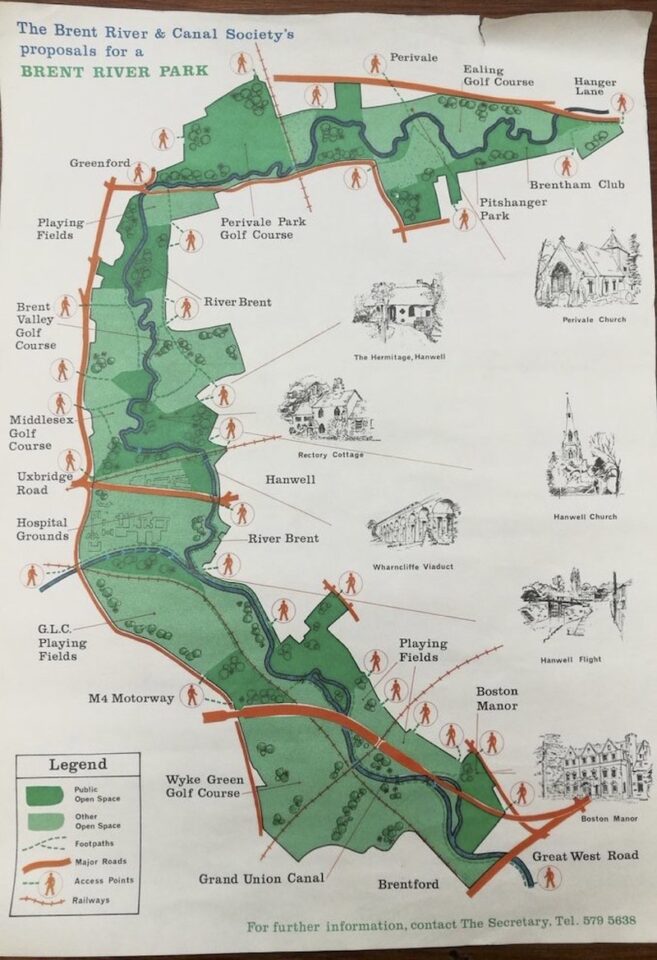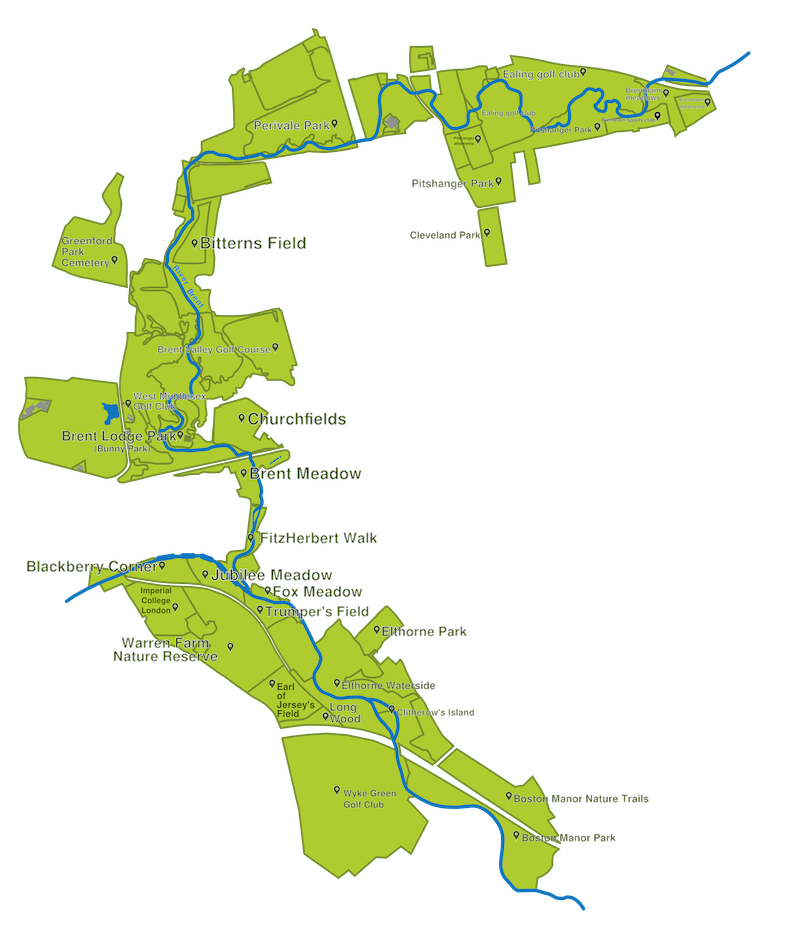History of the Brent River & Canal Society
September 2023 marked 50 years since the formation of the Brent River & Canal Society, the charity which campaigned to set up the Brent River Park.

We’re extremely lucky, in this part of West London, to have this string of connected wildlife-rich green spaces following the course of the River Brent. During the Covid lockdown, many people said that the Brent River Park provided a lifeline.
This vast area of connected open spaces might feel timeless but it wasn’t always here. Its creation is relatively recent. In the 1970s, many of the open spaces along the River Brent were not well cared for and were not accessible to the public. It was not possible to walk between these areas and some were earmarked for development.
The idea of stringing these green spaces together into a large, multi-habitat, single park was the vision of Luke FitzHerbert, a former Irish Guardsman, a lover of the outdoors and a history teacher at Brentside High School. He gathered together a group of campaigners, which had its first meeting on 9 May 1973 and formally adopted its constitution as the Brent River & Canal Society on 19 September 1973.
The campaigners’ vision was ambitious. A map of the original Brent River Park proposal shows that many of the sites were not designated as Public Open Space at the time. Some people had other ideas about the uses for these pieces of land. For example, in 1976 planning permission was granted for a marina and hotel on Trumpers Field, which would have been built over what is now a thriving riverside meadow, soon to receive Local Nature Reserve designation.

At first, the Brent River Park campaign encountered some resistance from Ealing Council, although some individual officers and councillors supported the idea. Former planning officer (and now Brent River & Canal Society trustee) John Templeton recalls an early meeting with Luke FitzHerbert:
“As soon as I read in the local paper about his idea for a linear park, I phoned him up and he said “Come and have a chat this evening”. We spent till after midnight discussing how to get the councillors to endorse his idea without it being scuppered by the council. “We’re not having the public telling us how to look after our land!”, one of the senior officers said.”
The answer, they decided, was to appeal directly to the councillors:
“We decided Luke would lobby all the councillors with his brilliant idea and to bypass the council officers. He hired a coach and took them up and down the valley and they were all given tea in the garden of Dorothy Tyler at The Hermitage (the thatched cottage in Church Road Hanwell). About a couple of months later my boss, the chief planning officer, who must have been spoken to by the chairman of the planning committee, asked me to contact Mr FitzHerbert to discuss the council working with this society! I never knew whether he was aware we were already doing so!”
Eventually the council approved the plan and the Brent River Park was formally inaugurated on 29 June 1975.
It took some time for all the pieces of land to be added and some parts we asked for were not included, such as the land on which Ealing Hospital was built. The park didn’t reach its final extent until 1985, when a path was opened to enable a continuous walk along the River Brent from Hanger Lane to the Thames.

Tragically, Luke FitzHerbert was killed in a car crash in 2007. His two obituaries in the Guardian and the many tributes showed the esteem in which he was held. The footpath alongside the River Brent, between the Grand Union Canal and Hanwell Bridge, opened in 1985, was the final piece connecting the various Brent River Park green spaces. It was named FitzHerbert Walk in memory of the man who had the vision and campaigned for the park we now enjoy.
Luke FitzHerbert’s charity lives on. Today, the Brent River & Canal Society is still keeping a watchful eye on the Brent River Park. Our park has some areas under threat from encroachment, fly-tipping, water pollution and inappropriate development. With a catastrophic loss of UK biodiversity and in the midst of a climate emergency, the need for protected spaces like the Brent River Park is greater than ever. Our current initiatives include campaigning for Local Nature Reserve designation for Warren Farm NR and surrounding meadows, Cleaning Up the River Brent (CURB) from pollution and ensuring that Gurnell Leisure Centre is redeveloped without encroaching on our vital floodplain.
There is always work to do and, in the tradition of those early pioneers, we will continue to campaign for the protection, enhancement and extension of the Brent River Park. Please join us and help us to protect and improve your park.